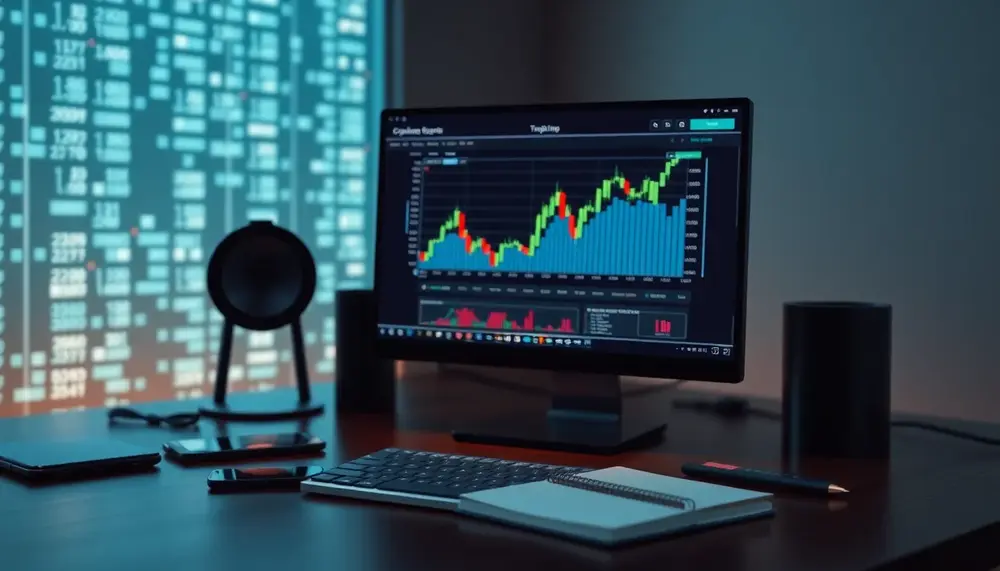Slippage
Slippage
Understanding Slippage in Cryptocurrency Option Trading
In the world of option trading with cryptocurrencies, there's a term you might come across quite often - Slippage. This concept plays a significant role and understanding it can provide great value in your trading journey.
What is Slippage?
Slippage refers to the difference between the expected price of a trade and the price at which the trade actually executes. To put it simply, it's when you get a different trade execution price than you were expecting.
Why does Slippage happen?
Slippage tends to occur during periods of higher volatility when market orders are used. It can also happen when a large order is executed but there isn't enough volume at the chosen price. In such situations, parts of the order will be filled at a different price, causing slippage.
Slippage in Cryptocurrency Option Trading
While trading with cryptocurrencies, slippage can occur due to the highly volatile and somewhat unpredictable nature of the crypto market. One minute, the price of Bitcoin could be at a record high, and in the next, it might fall drastically, which can result in significant slippage.
How can Slippage impact your trading?
The impact of slippage can be profoundly felt by traders. Depending on whether it's positive or negative slippage, it can either work in favor of the trader, leading to better profits, or against them, leading to significant losses.
Controlling Slippage
While it's nearly impossible to avoid slippage entirely, especially in the volatile crypto market, traders can take steps to control it. Using limit orders instead of market orders, being aware of the crypto market volatility, and avoiding trading during particularly volatile times are some of the strategies that can help manage slippage in option trading with cryptocurrencies.
Conclusion
In conclusion, understanding and managing slippage is a crucial aspect of option trading with cryptocurrencies. It can be the difference between a profitable trade and a loss. Therefore, gaining a firm grasp of this concept can prove to be highly beneficial for any crypto trader.
Blog Posts with the term: Slippage

Option trading is a complex field that involves contracts granting the right to buy or sell an asset, with call and put options being the two main types. Traders must understand market quotes, option values, strategies, risk management, and use...

The article provides a beginner's guide to understanding the differences between cryptocurrency and options trading, highlighting that crypto trading involves buying and selling digital assets with high volatility while options trading allows speculation on asset prices through contracts without owning...

Deribit is a leading platform for Bitcoin options trading, offering deep liquidity, advanced analytics, and robust tools like the Option Wizard to cater to both novice and expert traders. Its focus on security, innovation, and user-friendly features makes it a...

The article explains the basics of option trading with Python, highlighting options as financial instruments and Python's suitability due to its simplicity and powerful libraries. It emphasizes learning Python programming, utilizing finance-specific libraries like NumPy, pandas, and matplotlib, automating tasks...

Bybit’s crypto options platform offers a user-friendly, feature-rich environment for both beginners and pros to trade European-style contracts with robust liquidity. Setting up an account is straightforward, and the intuitive interface makes navigating option chains, placing trades, and managing risk...

Bitcoin options on the CME provide a regulated and secure platform for traders to hedge positions or speculate on Bitcoin's price movements without directly owning it, offering benefits such as risk management, leverage, flexibility, cash settlement, and high liquidity. This...

Option trading involves contracts that give buyers the right to buy or sell an asset at a set price before expiration, with calls for buying and puts for selling. These options can be used for hedging, speculation, or leveraging positions...

Option trading on expiry day involves heightened volatility and the potential for significant gains or losses as traders make final decisions regarding their positions. It's a critical time with specific rules, timelines, and phenomena like 'pinning' affecting market behavior; understanding...

Option trading charges are fees incurred when buying or selling options, including commission, regulatory, exchange, clearing, and miscellaneous fees. Understanding these costs is crucial for traders to manage finances effectively and strategize to minimize expenses while maximizing potential profits....

Understanding and adhering to minimum capital requirements is crucial for sustainable options trading, as it helps manage risks associated with leverage and market volatility. The amount needed varies depending on the broker and trading strategy, ranging from $500 for basic...

The article discusses the opportunities and benefits of option trading in the US market, highlighting its flexibility for speculation or hedging with leverage, and emphasizing the importance of understanding key concepts such as premiums, strike prices, expiration dates, intrinsic/extrinsic value,...

Weekly expiry options, expiring every Friday, offer traders frequent opportunities to capitalize on short-term market movements with lower premiums and flexibility but come with challenges like rapid time decay and increased volatility. Effective strategies for trading these options include the...

Option trading and forex trading are two distinct methods in the financial markets, with options offering strategies for various market conditions without obligation to execute trades, while forex involves currency exchange influenced by economic factors. They differ in terms like...

Daily expiry in Bitcoin options trading offers traders precision and flexibility to capitalize on short-term price movements, with lower premiums but higher timing demands. While it provides opportunities for quick profits through frequent settlements, its fast-paced nature requires disciplined strategies...
